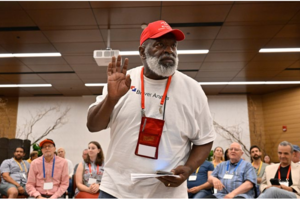When the Virus Moves to Red States

For most of the spring, COVID-19 was primarily a blue-state pandemic. While conservative areas of the country were hit by the virus as well, the types of densely populated urban areas that tend to vote Democrat absorbed the overwhelming majority of cases, hospitalizations and deaths. For much of rural and small town America, COVID-19 was less of an immediate danger in their communities than for other people in other parts of the country.
This geographic disparity provided an ideal foundation for President Donald Trump’s ongoing efforts to minimize the impact of COVID-19 and push the country on a path toward accelerated reopening. Trump recognized that a prolonged economic downturn would pose a tremendous threat to his re-election campaign. So he gambled that moving quickly to reopen business could yield economic benefits without increasing the health risk. Because his core base of support was largely isolated from the effects of the pandemic, his bet appeared to be working.
Until it didn’t. As coastal and urban America began to make strides to control the spread, COVID-19 began moving to those parts of the country that had embraced Trump’s call to reopen most quickly. In early June, the outbreak of new cases in red states had outpaced the numbers in blue states. Back in early April, 67 percent of new cases had appeared in states that Hillary Clinton had carried four years ago. But within the last few days, that trend had completely reversed. As of June 28, more than 70 percent of new cases were identified in states that had voted for Trump.
As long as Trump’s message of the pandemic’s diminishing threat was in sync with the real-world experience of his supporters, the “time to move on” strategy was working just fine. But now that COVID-19 is having such a debilitating impact in the places where his loyalists live and work, it may be much more difficult for the president to continue on that path.
Vice President Mike Pence and Senator Mitch McConnell have already begun to encourage masks and other social distancing measures. Republican governors in Texas, Florida and Arizona are urging their residents to stay home and are reversing many of the reopening decisions in their states. Even former Vice President Dick Cheney is up on social media wearing a mask.
All of which is to say that conservative voters are hearing a new cautionary message from many familiar voices. There’s no way to predict whether Trump will revise his full-speed-ahead approach as well as the virus continues to spread. And it’s impossible to know whether those red-state residents will be as likely to embrace Trump’s messaging if he does not shift course.
But putting COVID-19 in the rearview mirror is becoming much more complicated for the president. Trump’s supporters are incredibly loyal to him, but it may be more difficult for him to convince them to stick with him on the economy if COVID-19 is wreaking havoc in their own lives.
Want to talk about this topic more? Join Dan for his weekly webinar “Politics In The Time of Coronavirus” on Thursday mornings at 11 AM PST. You can register for it here: https://www.lawac.org/EventDetail/eventid/30736. Or read more of Dan’s writing at: www.danschnurpolitics.com.

April 19th, 2024

April 19th, 2024

April 18th, 2024

April 17th, 2024